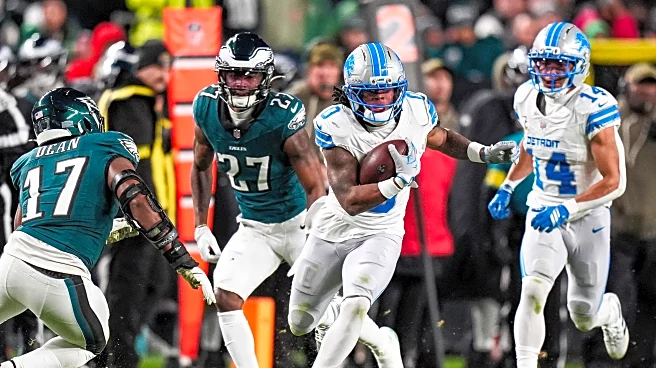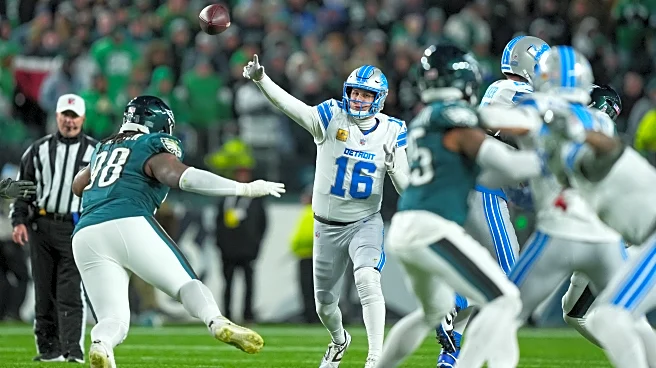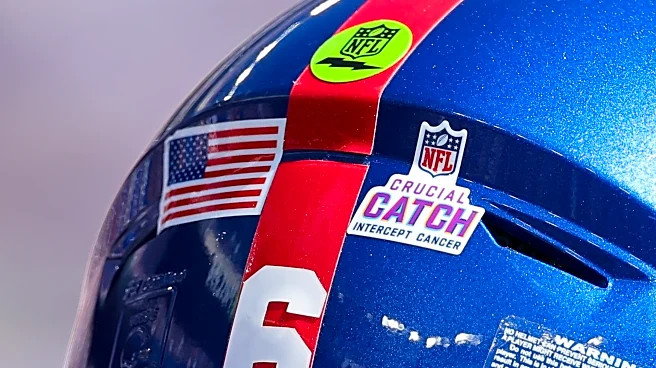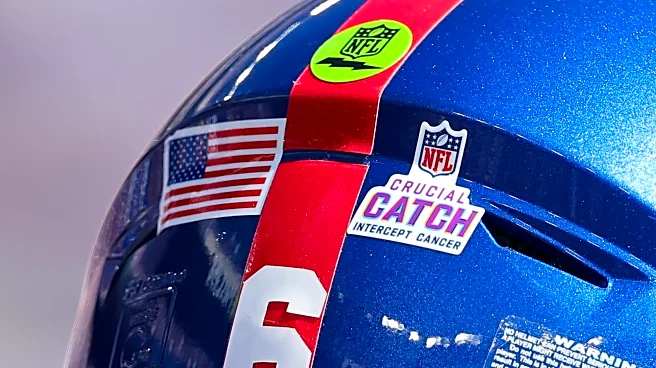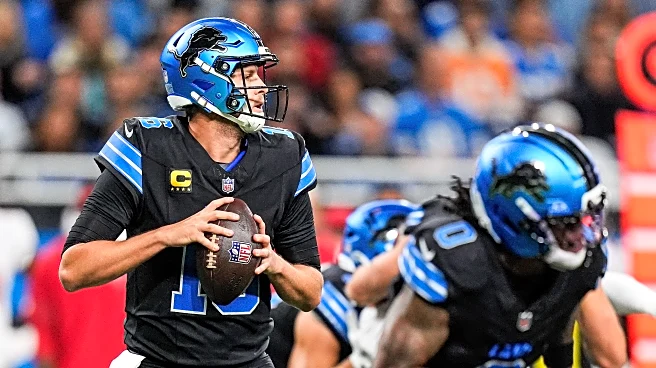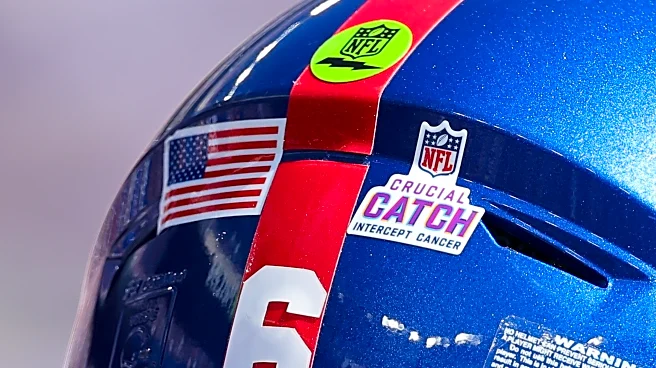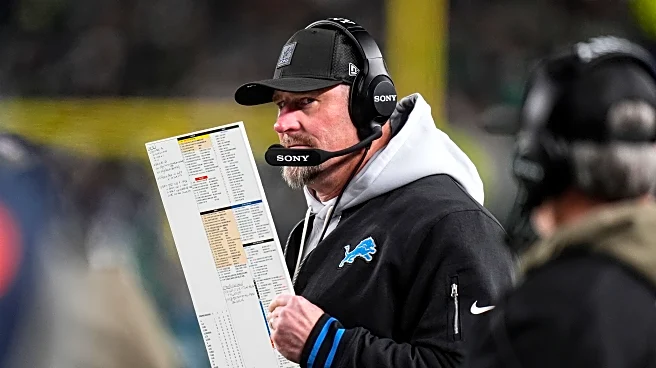The Lions have now dropped three of their last five games—more than they lost in the entire 2024 regular season—after hitting an unwelcome rock bottom on offense against the Eagles, producing their first
single-digit performance (9 points) since that forgettable Week 7, 2023 loss to the Ravens. Sitting third in the NFC North, Detroit once again finds itself—much like in the Commanders matchup—as a hefty favorite against a backup quarterback in what feels like a must-have bounce-back opportunity.
Dan Campbell faces the franchise that drafted him and with whom he spent his first four NFL seasons—though he’ll do so without former coaching partner Brian Daboll, now replaced on an interim basis by Mike Kafka. Kafka’s presence is only one piece of the Giants’ offensive churn in a tumultuous season. Russell Wilson torpedoed his own starting gig, rookie spark plug Jaxson Dart remains out with a concussion, and both enigmatic, tornado-in-a-trailer-park running back Cam Skattebo and second-year star receiver Malik Nabers are lost for the season. After finally piecing together a competent offensive line for the first time in over a decade, New York’s skill talent has dropped like flies. Because of this upheaval, this preview leans more toward the opposite side of the ball—where the Giants field the second-most expensive defense in football.
Campbell and several other members of the Lions have emphasized this week that the Giants are better than their 2–9 record suggests. They were particularly frisky in Dart’s starts and sit at 1–4 in one-score games, with late-game collapses against the Cowboys, Broncos, and Bears, plus last week’s loss to the Packers after leading 20–19 midway through the fourth. Detroit will need to fight for a full 60 minutes while continuing to recalibrate an offense still adjusting to life without its usual dominant offensive line or Pro Bowl tight end Sam LaPorta.
This preview dives into five key statistical matchups as the Lions begin a stretch of three games in 18 days, entering Week 12 on the outside looking in at the playoff picture.
Note: Unless otherwise indicated, all statistics are sourced from NFL Pro, TruMedia, FTN Fantasy, or Pro Football Reference—excluding garbage time.
Road To Victory
The Lions offense, driven so heavily by its ground game, has been far more volatile this year than it was over the previous two seasons. Detroit’s offensive line hasn’t consistently controlled the point of attack, climbed to the second level, or carved out clean lanes for Jahmyr Gibbs and David Montgomery against the Packers, Chiefs, Vikings, or Eagles. In losses, the Lions are stumbling to just 3.3 yards per rush, a 40.7% rushing success rate, and a 3.5% explosive run rate — the worst yards-per-carry figure of any team in the league in defeats. In contrast, in wins, the rushing offense averages 5.2 yards per rush, a 44.6% success rate, and an 8.2% explosive run rate, showing a clear separation in performance. When the run game fires, the offense hums. When it doesn’t, everything clogs.
Regardless of opponent, Detroit needs to get the rushing attack recalibrated and figure out what this iteration of the offensive line can be counted on to do. But the Giants present an ideal test case — the perfect opponent to learn what’s worth leaning into, what should be shelved, and where Hank Fraley’s group up front can reassert its identity.
New York Giants Season Run Defense
- 5.5 yards/rush (32nd)
- 53.7% rushing success rate (30th)
- -0.14 EPA/rush (32nd)
- 15 rushing touchdowns (t-30th)
- 2.09 rushing yards before contact/rush (31st)
- 3.44 rushing yards after contact/rush (30th)
- 12.8% explosive run rate (31st)
As bad as those numbers are, they actually get worse when isolating Weeks 7–11, where the Giants are surrendering 6.0 yards per rush and a 14.8% explosive run rate. This is a run defense that is rotting out from the inside.
They’ll also be without one of their few reliable run defenders in Kayvon Thibodeaux this week, and have been without strudy linebacker Micah McFadden for the bulk of the year. This leaves Brian Burns and rookie Abdul Carter—both far better pass rushers than run defenders—handling edge responsibilities. Plus Bobby Okereke, having arguably the roughest season of his career, and the rotating cast next to him (lately Demetrius Flannigan-Fowles), which has offered little support. Most surprisingly, Dexter Lawrence has fallen off a cliff in run defense: his stop rate has plummeted from 11.9% in 2023 (4th among DTs) to just 5.7% (t-87th). Outside of safety Jevon Holland and nickel Andru Phillips, the Giants’ DBs don’t exactly relish the high-speed collisions demanded in run support.
Second-year defensive coordinator Shane Bowen’s unit whiffs at a 22.8% avoided-tackle rate in the run game—one of the worst in football—setting the table for Gibbs and Montgomery to slice through arm tackles and turn small creases into chain-moving gains. If the Lions are going to reestablish their identity and give Jared Goff the cleanest possible runway following last week’s collapse, this is the opponent to do it against.
Gaping Holes Through Gap Scheme
While we’re in the laboratory examining the Giants’ run defense, it’s worth putting their struggles under the microscope for additional context. As noted, their dismal run defense has worsened over a five-game losing streak since Week 7.
New York Giants Run Defense since Week 7 – Man/Duo Runs
- 8.4 yards/rush (31st)
- 52.4% rushing success rate (28th)
- -0.46 EPA/rush (31st)
- 5.7 rushing yards before contact/rush (32nd)
- 2.7 rushing yards after contact/rush (28th)
- 23.8% explosive run rate (32nd)
- 23.9% avoided tackle rate (25th)
- 9.1 yards/attempt vs stacked yards (32nd)
New York Giants Run Defense since Week 7 – Power/Counter Runs
- 7.2 yards/rush (t-30th)
- 53.8% rushing success rate (25th)
- 0.13 EPA/rush (23rd)
- 4.5 rushing yards before contact/rush (32nd)
- 2.7 rushing yards after contact/rush (24th)
- 30.8% explosive run rate (31st)
- 38.5% avoided tackle rate (30th)
- 7.6 yards/attempt vs stacked yards (32nd)
Since Week 7, the Giants have been a sieve against gap-scheme runs, giving Hank Fraley’s front line a tailor-made opportunity to reset the tone. New York is routinely blown off the ball on man/duo concepts and completely unravels against power/counter. Their issues are consistent: a lack of backbone to withstand man-based blocking, linebackers losing track when pullers enter the picture, and a defense unable to tackle or survive—even with stacked boxes.
For Detroit, the blueprint is clear: lean into the gap family, use duo to generate vertical displacement, stress linebackers and tacklers with power/counter, and keep the looks fresh with varied personnel and formations. With Penei Sewell serving as a tone-setting mauler capable of taking over games when allowed to pave the way, the Lions should have every chance to regain their downhill identity and let the ground game stabilize the offense. While the Giants rank in the top 10 in some zone-blocking metrics during this span, they cannot hold the point of attack against physical run games—meaning their $135M defense struggles to consistently shorten drives, force third-and-longs, and wreak havoc.
Taking a Giant Risk
To counteract some of their run-defense deficiencies, Bowen has increasingly pulled different levers—specifically dialing up second-down pressure in an attempt to force tougher third-down situations. The Giants are outside the Top 15 in first-down blitz rate and outside the Top 20 on third down, but where they try to make an impact is on second down. They blitz on 31.8% of dropbacks on second down, trailing only the Vikings and Broncos. Unfortunately, that aggression has not translated to success against opposing quarterbacks.
Giants Second Down Passing Defense When Blitzing
- 74.4% completion percentage (28th)
- 7.3 yards/attempt (18th)
- 114.8 passer rating (23rd)
- 7 passing touchdowns (32nd)
- 58.1% offensive success rate (27th)
- -0.35 EPA/dropback (29th)
- 14.0% explosive pass rate (17th)
- 6.3 YAC/reception (24th)
- 24.5% pressure rate (29th)
The Giants have been their own worst enemy on second-down blitzes, giving up big chunks through the air while generating a worse pressure rate and more yards after the catch than when they drop back into coverage. If New York wants to avoid consistently having the chains moved on them and letting the Lions sustain drives, they’ll need to be more disciplined with second-down pressures and lean on coverage to force mistakes rather than gambling on an ineffective blitz.
Second down has also been a point of struggle for the Lions; since Week 8, they rank 31st in the NFL with a 44.8% offensive success rate, with the Browns’ offense and their quarterback debacle only being worse.
Overall, this season, the Lions’ passing game and Jared Goff had thrived against the blitz, posting a 119.3 passer rating (4th), 9.4 yards per attempt (2nd), and a 50.0% success rate (8th). Since Week 8, those numbers dip to a 109.4 passer rating (10th), 8.5 yards/attempt (7th), and a 40.0% success rate (22nd), but Goff and Detroit’s offensive line will look to exploit the Giants’ over-aggression, punish blitzes, and complement their hoped-for success in the run game—leaving New York with few defensive answers.
Coverage Management
The defenses with the highest man-coverage rates are the New York Jets at 42.8% (under Aaron Glenn), the Lions at 40.1%, and the Giants close behind in third at 39.3%. Unlike Detroit, which allows only a 35.6% offensive passing success rate in man coverage (4th), the Giants allow a 44.0% success rate (22nd) despite specializing in it. They have seen some success, however, by limiting yards after the catch to 3.6 per reception (4th—just behind the Lions) and recording 12 quick pressures (t-12th). The Lions’ offense, which thrives on yards after the catch, has recently been affected by these quick pressures, occasionally throwing Goff off his rhythm.
Jared Goff, though, has generally excelled against man coverage over his recent Lions career, currently leading the NFL with a 129.1 passer rating and a 51.9% passing success rate (3rd) in such situations. He has recently relied particularly on one weapon to punish defenses that rely on man coverage: Jameson Williams. Since Week 9, Williams leads the NFL with 164 receiving yards against man coverage, with only Pop Douglas (second, 104 yards) also having triple-digit production. In that span, Williams also leads the league with 94 yards after the catch, three receiving touchdowns, and six first downs. Williams has been on a tear and will look to continue exploiting the Giants’ coverage as the Lions return to Ford Field for a three-game homestand.
Jameis & The Giant Protection
While most of this preview has focused on the Giants’ defense, their instability at skill positions—and the smaller sample-size group that will face the Lions—makes one offensive area worth highlighting: the line. For years, particularly during their Super Bowl seasons of 2007 and 2011, the Giants’ offensive line was a resounding strength. Lately, though, it has been… clownish.
From 2020–2024, the Giants allowed a 39.9% pressure rate—the worst in the NFL. They ranked in the bottom five in pressure allowed four of those five seasons, finishing last in 2022 and runner-up twice. For the first time in years, however, New York has built a line that is genuinely respectable.
Left tackle Andrew Thomas is playing at an All-Pro level, while right tackle Jermaine Eluemunor has thrived in his second season with the Giants during a contract year. Both left guard Jon Runyan and veteran right guard Greg Van Roten have performed satisfactorily on the interior. Together, the unit has allowed a 36.7% pressure rate, ranking 17th in the NFL.
This line gives backup quarterback Jameis Winston a real chance to put the Lions’ secondary under duress. Against a pass rush led by Aidan Hutchinson and Alim McNeill—which has been slightly underwhelming at times—the Giants’ improved protection could allow Winston to make plays and keep New York competitive, depending on which version of Winston shows up.


